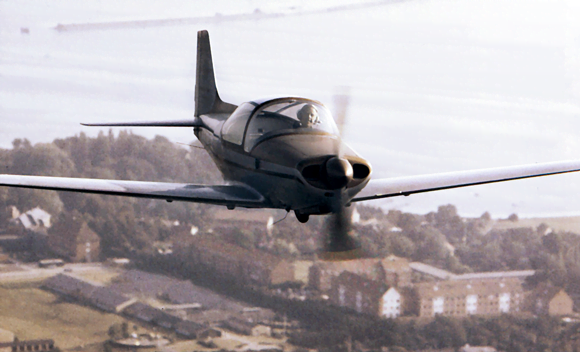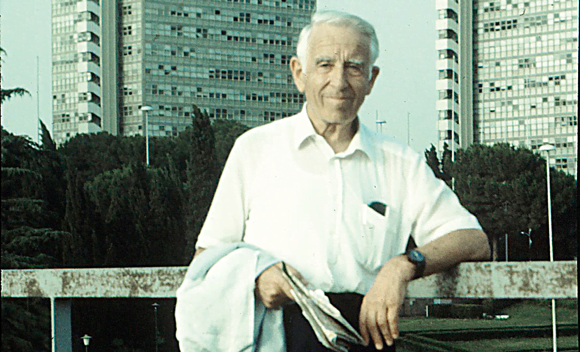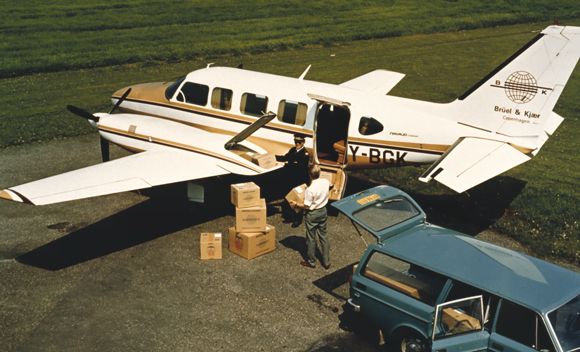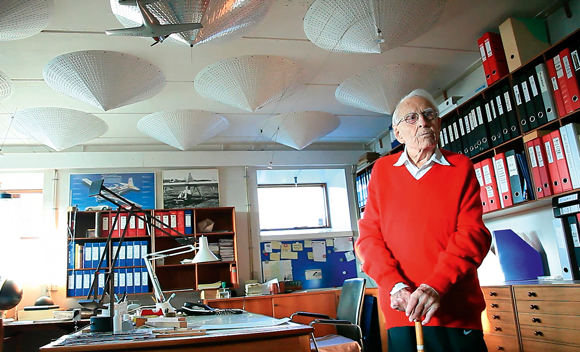
It’s no exaggeration to say that the entire discipline of sound and vibration can be traced to these and other innovations developed by Per Brüel and his partner Viggo Kjær; innovations that laid the foundation for sound and vibration measurement and analysis technologies that contribute to the smartphones we use, the cars we drive, the aircraft we fly in – even the environment in which we all live. “He literally created the field – industry didn’t measure sound and vibration at all in the days when he started,” says Torben Rask Licht, M.Sc. E. E., Product Manager of Vibration Calibration Systems for Brüel & Kjær, who worked alongside Brüel for more than two decades. “In today’s terminology, he branded the idea.”
It was an idea that provided the genesis of a global company founded by Brüel and Kjær, a company that has been the world’s largest specialist in sound and vibration solutions for decades and is still animated by the example of its founders. “Brüel & Kjær today is a reflection of Per Brüel’s action and vision,” says Lars Rønn, Managing Director of Brüel & Kjær. “Our company culture, our pride in product quality and our focus on innovation all stem from those early days.
If this company is synonymous with sound and vibration, it is at least in part because we still so closely identify with the beginning that Per Brüel and his partner Viggo Kjær gave us.” From belief in giving employees freedom to explore, to focus on solving customer problems and commitment to opening global markets, Brüel & Kjær still operates along unmistakable guidelines that the two partners established.
A charismatic personality
According to those who worked with him and know him well, Per Brüel is charismatic, bright and fast-thinking. He is an exceptional engineer, although anything but a nerd, passionate about cars, motorcycles, airplanes (a pilot himself) and red wine. His faith in his own instincts and insight extended to hiring people who he sensed would be right for the company, “I like lucky people, the ones who dare to take chances, believing that they will be successful. It is said that Napoleon, when he was to promote an officer, always asked, ‘is he a lucky man?’ instead of asking for the officer’s record. I must confess I have used the same method when I hire young engineers and I have had good results. It may not seem nice, but the result is that I have been very fortunate and have ended up with a long series of excellent assistants and colleagues. Thank you, Napoleon.”
An engineering playground
Nowhere is that influence more apparent than in Brüel’s attitude towards work and employees. “We wanted to make products that had an impact on society and we wanted to make money,” says Brüel. “We also aimed to create steady jobs, so we wouldn’t have to fire people. If I had to choose a motto for my work, it is that it must in no way be boring.”
Speaking on behalf of his partner, Viggo Kjær, he adds an unofficial rule of conduct, “Running a business is about having fun. Having fun is the best way to use your skills. We wanted talented people who could think for themselves, were creative and also a bit lucky. Employ good people; don’t tell them what to do when they start work, because people will find that out for themselves, making them highly inspired.”
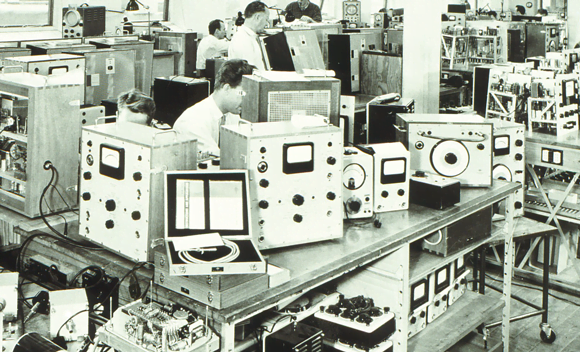
At one point, Kjær sold his accordion and Brüel parted with his Leica camera to keep the business going. “I was scared stiff of borrowing money,” says Brüel. “I thought, if we did, we would die. It’s far too expensive. We didn’t want to be dependent on bankers; we wanted to be 100% self-financed.” An understandable attitude in light of the severe financial crisis that gripped the world economy in the 1930s, when the two partners started out. While Brüel & Kjær is now too large a company to be self-financed, the founders’ attitude of financial prudence continues today.
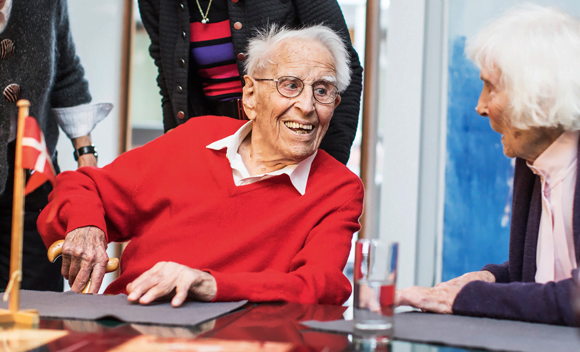
Global aspirations
Still fundamental to the company is Brüel’s drive to expand into global markets and to develop products based on customer needs. He was a globalizer long before the word globalization gained currency. “We were young – we felt we could do anything,” he says. “That attitude lies within our logo, a globe with a wire going around it two and a half times. We would not settle for less. We prepared to go global from the very beginning.” One advantage of being so far ahead of the technology curve was that, as Viggo Kjær observed, “Internationally, we didn’t have many competitors.”
This was a competitive vacuum that Brüel single-handedly rushed to fill, making marathon driving trips that criss-crossed the US and repeated trips as far afield as Russia and China in search of new markets. From the 1950s onward, Brüel, an accomplished pilot, flew company planes from what was humorously referred to as B&K Airlines on many of these journeys, not only within Europe but also as far as Thailand and North America. “He was a pioneer and a global representative for the company, a pilot who flew far and wide to open new markets,” says Rønn. “Sales distribution today is founded on what he did – as a result, a significant amount of Brüel & Kjær’s sales today are in Asia.”
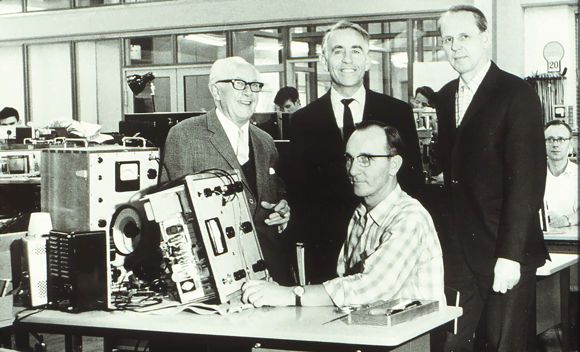
A pioneer in creating customer feedback from his journeys, Brüel was determinedly customer-centric long before the term was coined. “He was always inspired on his return from visiting customers and finding out what they needed,” says Svend Gade, Solution Specialist and Associate Professor at Brüel & Kjær.
“Today, we still develop new products based on market feedback – we have customer clinics to find solutions according to customer requirements and customers are invited in to help test new products. Innovation for Brüel & Kjær has always been about understanding customer challenges.” The fact that Brüel & Kjær stays close to its customers through 13 local sales offices and more than 100 distributors and agents worldwide is in no small measure thanks to Brüel’s path-breaking example.
100 years of achievement
Finally, there is no doubt that everyone at Brüel & Kjær would be happy to claim spiritual kinship with a man who, on March 6, looked back on a century during which he played multiple larger-than-life roles: engineer and visionary inventor, founder of a major global corporation, enthusiastic pilot and explorer who personally pioneered new markets and whose accomplishments continue to help us expand our most exciting frontiers.
Brüel & Kjær data acquisition and vibration test systems have been used to test NASA’s Mars Curiosity rover. And when a lander from the European Space Agency’s Rosetta space probe recently touched down on a comet, Brüel & Kjær accelerometers were there to ‘listen’ to its landing. Not a bad legacy. Happy 100th, Per.
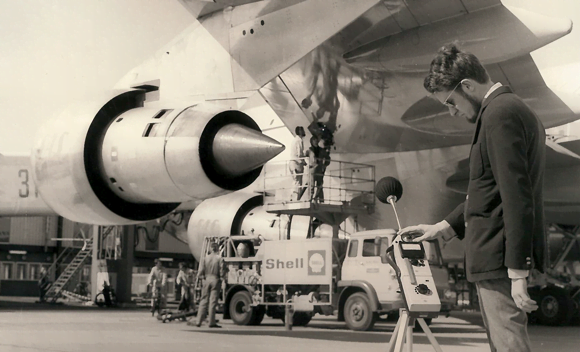
Per Brüel innovations
Examples of key technologies that Per Brüel helped to pioneer – and that either are still in use or provided the basis for current Brüel & Kjær products:
- Constant Percentage Bandwidth (CPB) analyzer – incorporated today in PULSE™ and 2250/70 Hand-held Sound Level Meters and Analyzers
- Standing Wave Apparatus – for material testing, designed in 1944 based on Brüel’s Ph.D. thesis and still in use some places today. Replaced by newer but similar instrument and principles in mid 90s
- Level Recorder – in production 1949–1985 – now replaced by digital technology, but principles remain the same
- Accelerometers and microphones – still the best transducer technology for measuring sound and vibration.
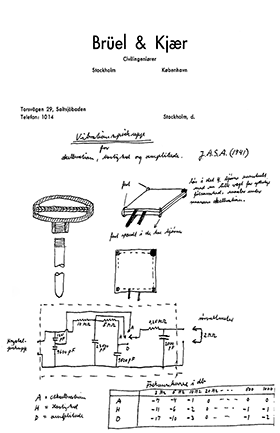
Hand drawing of the first Brüel & Kjær accelerometer (Type 4303), developed in 1943.
Background information for this article was drawn from ‘Journey to Greatness: The Story of Brüel & Kjær’, by Jackson Mowry and Ghita Borring

Suscríbase a nuestro boletín informativo y recibirá las últimas noticias de B&K sobre sonido y vibración


